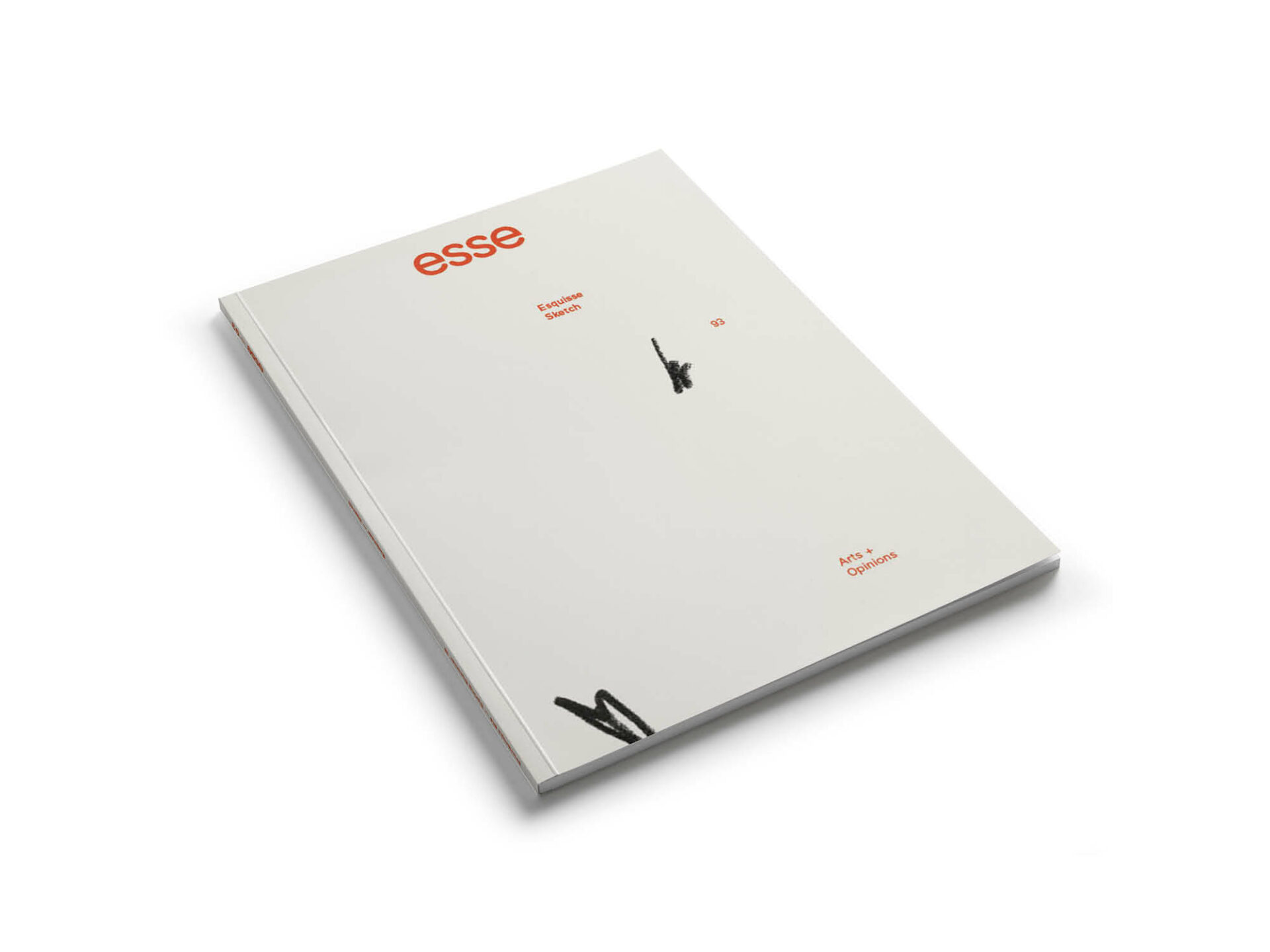The Sketch: A Promise of Dialogue
Draft, outline, rough copy, diagram, study, or sketch are some of the forms evoking a work in the act of becoming. Although what sets them apart matters little in the context of this issue, what brings them together definitely concerns us. These various modes, which we convene under the term sketch, have a common preparatory function and consequently, a status of incompletion. The history of contemporary art has shown that by giving the creative process a certain autonomy, avant-garde movements have marked the end of the supremacy of the finished work. Even the recent interest in reskilling,1 1 - See Issue 74 of esse, Savoir-faire/Reskilling (Winter 2012). based on revalorizing skills while paying particular attention to the object, does not appear to have cast a shadow on the artistic preoccupation with the work in progress, and all informal practices indicate paths that traverse this preoccupation.
Maintaining its role of first form, the sketch leads to a wide range of strategies and gives rise to new research on the materiality, temporality, and spatiality of a work. To do this, it still takes the traditional route of drawing, painting, and sculpture, and sometimes of new technologies, while also referring to the outline of a movement, the brief posture, or the tenuous attempt to communicate an idea in words. From the English sketch, we get the performative aspect of drawing, that is its connection to theatre and by extension, to dance and performance, as well as to narration and orality, which are expressed in comic books and satire. Therefore, we designed this issue to reflect the abundance of possibilities and deliberately break away from an essentially discipline-based approach to drawing, focusing instead on the creative intention found in the sketch and the fluctuations of its outcomes.
While the sketch often refers to its own existence as gesture, material, or form through the questions it raises about incompletion, it does not lack an engagement with and consideration of the outside world. Perhaps this is precisely what unites the practices discussed here, however different they may be. Many of the projects presented, as well as the analyses underpinning them, take a critical view of art and the world. We see, for example, how the incomplete can reflect an ideological stance that is debatable and sometimes restrictive, but also how some artists use the power of action to undermine conventions or reappropriate history. Inuit drawings rooted in a long, satirical tradition play a subversive role; they are informed by strategies of decolonization that aim to deconstruct stereotypes still all too present in contemporary art. The notions of redress and healing are emphasized several times in this issue, as the sketch bears all the elements conducive to renewal. In an interview with François Morelli, which focuses on art education and knowledge sharing, the artist-teacher points out that “non-judgmental, [the sketch] should not be laboured with planning or hindered by censorship. It can be thrown away and started over. Its ultimate value is in its ability to ask questions and stir things up.” This aspect of stirring things up is precisely what we wish to expose or even provoke through this issue, assuming that the sketch can also be a call to action. For this reason, movement, performance, and dance are also considered as extensions of the sketch and are discussed in several articles.
Lastly, we could see the sketch as a promise — the promise of a future work, certainly, but above all, the promise of a dialogue between the idea and its realization, between the outline and the eventual work, and ultimately, between art and those who engage in it.
Translated from the French by Oana Avasilichioaei
